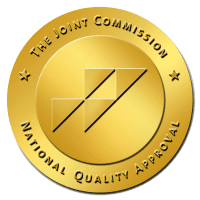The majority of pharmacy-filled prescriptions are for painkillers, making them incredibly popular. Unfortunately, as many as 6% of Americans over the age of 12 abuse prescription every year.
At times, pain medication can be incredibly relieving, making it very popular among people with bad injuries or illnesses. If you’re not careful, however, pain medication can actually do more harm than good. Having a solid understanding of the different types of pain medication available will help you make the best choices and avoid further health complications.
This pain medication list from strongest to weakest will help you understand the options available. Let’s take a deeper look at the choices you have.
Pain Medication List From Strongest to Weakest
Just because a doctor prescribes something, that doesn’t always mean it’s entirely safe. The case with many pain medications is that they can be very helpful, but you should always follow the guidance of your doctor.
Exceeding your dosage or mixing with other medications can cause a range of complications and health issues. If misused, it can lead to addiction and dependence.
Some pain relief medications do more than just help with pain. They can also produce feelings of euphoria, and this tends to make it harder for people to stop using them. This only becomes more difficult for people if they’ve used them for a long time.
The risks and side effects of different painkillers vary. All can have a negative impact, but some present a greater risk than others.
Carfentanil
Carfentanil is a synthetic opioid and a fentanyl analog, and it’s very potent. The DEA claims that it’s roughly 100 times more potent than fentanyl and 10,000 times more potent than morphine.
One of the more well-known uses for carfentanil is as a tranquilizer for elephants and other large animals. With this in mind, even a small dose can be potentially lethal for humans.
There have been a large number of deaths in the past due to people overdosing on carfentanil, and it’s therefore considered highly dangerous. While it’s not legal, it can be found on the black market all over the US.
Sufentanil
Also known as Dsuvia, this is the most powerful opioid painkiller available that has been approved for human use. It’s significantly less potent than carfentanil, but still about 1,000 times stronger than morphine.
The FDA approved Dsuvia in 2018 for the purpose of acute pain management. This exclusively applies to hospital settings, so it’s only available under the supervision of medical professionals. Even so, there’s still a lot of concern among health experts regarding the potential diversion, misuse, and abuse of Dsuvia.
Fentanyl

Fentanyl is a fast acting synthetic opioid that was originally created to help provide pain relief for cancer patients. It can produce feelings of euphoria and a strong, short-lived high when consumed, which has led to widespread abuse of this drug.
It’s now illegal but is quite popular on the black market. It’s manufactured in secret labs, many of which are in Mexico. Fentanyl is roughly 80 to 100 times more potent than morphine.
A large number of drug manufacturers lace heroin with fentanyl as it can increase its potency. More often than this, people buy it under the belief that they’re buying heroin. This is very dangerous as people consume it thinking that it’s heroin, and can easily overdose or suffer from severe side effects.
Hydromorphone
Hydromorphone (also known as Dilaudid) is another strong painkiller, about two to eight times more powerful than morphine. People sometimes abuse Dilaudid as it creates feelings of euphoria, relaxation, and sedation, and may even relieve anxiety.
In the US, it’s currently classified as a Schedule II drug. This means it has a high potential for abuse and may result in severe physical or psychological dependence.
It dissolves easily in water and can be injected into the bloodstream, so it’s often used as a substitute for heroin. The effects are somewhat similar, and it can also be dangerous, especially when abused.
Oxymorphone
Opana is one of the most powerful prescription pain solutions available. It’s mostly prescribed to those with moderate to severe pain and can produce strong feelings of relaxation and euphoria. Like Dilaudid, this is a Schedule II drug.
It should only ever be used as instructed by a doctor as there’s a risk of abuse and addiction. Those who do abuse oxymorphone often consume it in large doses orally, but they may also snort it, or dissolve and inject it.
Methadone
There are two main drugs containing methadone that people use for getting rid of pain: Methadose and Dolphine. Methadone is another synthetic opioid that’s classified as a Schedule II drug. It comes in liquid, capsule, and tablet form.
It’s a prescription drug that’s usually used to treat the causes of pain. Sometimes, however, it also serves as medication-assisted treatment to help with drug detox, as well as treatment for opioid addiction.
The nonmedical use of methadone is strictly illegal. It should only ever be used under the supervision of a medical professional.
It’s chemically different from heroin and morphine, but if a user abuses it, they may experience similar effects. This makes abusers very prone to addiction, resulting in a high level of risk.
Oxycodone
The two key drugs containing oxycodone are Percocet and OxyContin. This is one of the strongest painkillers that’s only semi-synthetic rather than fully synthetic. It’s a prescription opioid that’s extracted from the poppy plant.
It’s not overly difficult to obtain and is highly addictive. It has become incredibly popular among narcotic abusers in recent years.
A common way for abusers to consume oxycodone is by either crushing the tablets and then snorting them, or by injecting it after dissolving it in water. Another method some people use is to place a tablet on a piece of aluminum foil and heat it while inhaling the fumes.
Oxycodone can produce strong feelings of euphoria, pain relief, and relaxation. As such, it’s often abused.
It’s not as potent as the above opioids but can still be very powerful. As such, it’s also classified as a Schedule II drug due to the risk of dependence and addiction.
Morphine

Morphine is possibly the most well-known opioid on this list, and like oxycodone, it’s also sourced from the poppy plant. It’s widely used in hospitals as it’s an incredibly effective form of pain relief. Like other opioids, however, there’s still a risk of addiction and dependence.
It has a similar level of potency as oxycodone, so it’s also classified as a Schedule II drug. Those who abuse it usually inject it into their system. The effects are felt almost instantaneously, and the potential for abuse is very high.
Hydrocodone
Both Vicodin and Lortab contain the opioid hydrocodone, and they’re typically prescribed to treat moderate pain. It’s a less potent opioid than morphine, but can still be almost as powerful, and it’s a common choice among opioid abusers. This is the most widely prescribed opioid in the US, and much of its distribution is for illegal use.
Many abusers forge prescriptions to obtain hydrocodone. Some people have been known to steal it, and some pharmacists and doctors even distribute it illegally. Some people also take part in doctor shopping which typically involves visiting various doctors to obtain multiple prescriptions.
Abusers often take hydrocodone with alcohol as it can enhance the effects. It’s easy to build up a tolerance, resulting in them moving on to more powerful opioids.
Codeine
This is one of the less potent opioids on the list and is generally used to relieve mild to moderate pain. Some prescription Tylenol medications that are used to treat couching also contain codeine.
Compared to the above opioids, the potency of codeine is much lower and it’s therefore less likely to be abused. It does still happen, however, so it should still be used responsibly to avoid building up a dependency.
Meperidine
This is a synthetic opioid found in the drug Demerol. It’s not usually a first choice but is most commonly used when other opioids seem to be ineffective. It’s fairly weak compared to other opioids but can still be dangerous.
Despite the low potency, users can build up a tolerance, and it may still lead to dependence and addiction. This sometimes happens even faster with meperidine than with other opioids.
Tramadol
Tramadol is the weakest opioid on this list and is found in the drug Ultram. It’s a commonly prescribed pain medication and is somewhat similar to meperidine. They have a similar level of potency, although tramadol is less likely to cause dependency or addiction, so it’s considered less dangerous.
With that in mind, misuse does still occur. People may take it for recreational purposes, and this can cause people to build up a tolerance.
Other Types of Pain Medication

Opioids, like those listed above, are the most common types of painkillers. There are, however, several other types of pain medication available. Depending on your situation, some of these other types could prove more suitable.
Local Anesthetics
Local anesthetics create a short-term loss of sensation. They’re typically used on specific areas of the body during surgery.
Common examples include lidocaine and bupivacaine. As these are generally only used for surgery in a medical environment, the risk of abuse or addiction is far lower than with opioids.
Nonsteroidal Anti-Inflammatory Drugs (NSAIDs)
Pain often comes from inflammation, and NSAIDs reduce this inflammation to help relieve pain. There are plenty of NSAIDs available such as ibuprofen, naproxen sodium, and celecoxib.
Others
There are some common nonopioid pain relievers on the market (such as Tylenol) that are common choices to help with mild pain. Some other psychoactive drugs may also be used to help relieve post-surgical pain including Gralise, Neurotonin, and Horizant.
Managing the Risk of Opioid Use
One of the most important times for opioid use is after surgery as the pain can be quite severe. The drug that a doctor prescribes will depend on the specific situation.
Things must be done carefully here as opioids can have various negative side effects such as:
- Nausea
- Vomiting
- Drowsiness
- Constipation
- Urinary retention
- Cognitive impairment
- Respiratory issues
There can also be a risk of misuse or overdosing, especially when it comes to ongoing pain. Even with short-term use, misuse is still possible.
Anyone who uses opioids should do so carefully. It’s essential to follow the guidance of your doctor to help minimize risks.
One of the most important things to do if there are any issues is to speak to your doctor. You might take the recommended dosage, and still experience pain, for example. Don’t just take more of the medication; contact your doctor and discuss the best steps to take with them.
And if you or a loved one already know that dependence on painkillers has become a problem, reaching out for our Joint Commission-accredited detox and opioid treatment programs is crucial.
Getting Help for Pain Medication Addiction

Even when taking the right precautions and using opioids as directed, dependence and addiction can still be a risk. If you or anyone you know finds themselves with an opioid dependency, it’s important to seek out help as soon as possible.
Purpose Healing Center is dedicated to helping people manage and overcome their addiction problems. We have locations in Scottsdale and a location in Phoenix as well, both of which offer fully integrated facilities that are specifically designed to help with drug and alcohol use disorders.
Addiction isn’t likely to disappear on its own. The longer it goes on, the worse it becomes. It’s best to act fast as this will make your treatment easier and you can get back to living your life.
Dealing With Opioid Addiction
With this pain medication list from strongest to weakest, you should have a clearer idea of the different pain medications available, as well as the risks associated with them. Anyone can fall into a cycle of addiction, but with the right help, it’s possible to claim your life back.
The team at Purpose Healing Center can help by developing a customized addiction treatment program just for you. Contact us today to find out more about how we can help.



